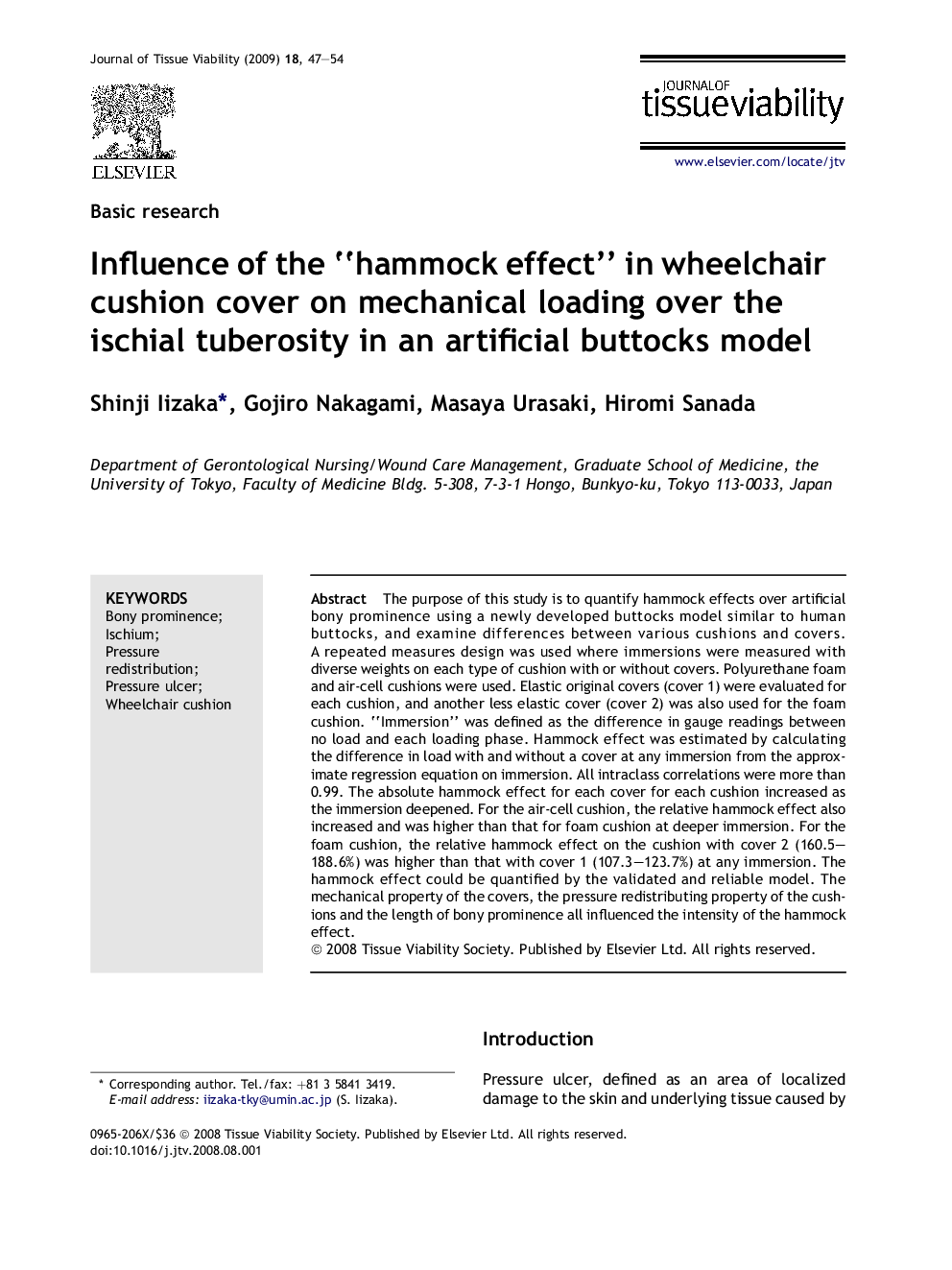| Article ID | Journal | Published Year | Pages | File Type |
|---|---|---|---|---|
| 2669048 | Journal of Tissue Viability | 2009 | 8 Pages |
The purpose of this study is to quantify hammock effects over artificial bony prominence using a newly developed buttocks model similar to human buttocks, and examine differences between various cushions and covers. A repeated measures design was used where immersions were measured with diverse weights on each type of cushion with or without covers. Polyurethane foam and air-cell cushions were used. Elastic original covers (cover 1) were evaluated for each cushion, and another less elastic cover (cover 2) was also used for the foam cushion. “Immersion” was defined as the difference in gauge readings between no load and each loading phase. Hammock effect was estimated by calculating the difference in load with and without a cover at any immersion from the approximate regression equation on immersion. All intraclass correlations were more than 0.99. The absolute hammock effect for each cover for each cushion increased as the immersion deepened. For the air-cell cushion, the relative hammock effect also increased and was higher than that for foam cushion at deeper immersion. For the foam cushion, the relative hammock effect on the cushion with cover 2 (160.5–188.6%) was higher than that with cover 1 (107.3–123.7%) at any immersion. The hammock effect could be quantified by the validated and reliable model. The mechanical property of the covers, the pressure redistributing property of the cushions and the length of bony prominence all influenced the intensity of the hammock effect.
